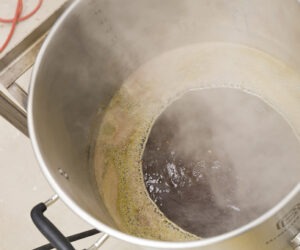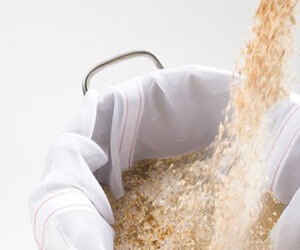Recipe Development: Tips from the Pros
Finding a homebrew recipe isn’t difficult — we have printed hundreds in BYO over the years, for instance— but there is something about developing your own homebrew recipe that is always appealing. Learn how the pros approach recipe development and use their advice the next time you set out to create a masterpiece.
Brewer: Luke Pestl, Bellwoods Brewery in Toronto, Ontario
More often than not, our inspiration comes from beers we’ve enjoyed from other breweries. As an example, our main saison Farmhouse Classic was initially inspired by classics like Saison Dupont. We like Brettanomyces in our saisons, so we’ve been Brett barrel aging more and more of our saisons in order to emphasize that. Farmageddon is a product of those barrels, and is evolving as our barrel program matures.
When we develop a recipe there is always a specific end-result in mind. Then we try it out, and then batch-to-batch tweaking (sometimes considerable tweaking) occurs. Even our “final” recipes can change significantly over time as we develop new techniques and utilize new ingredients to improve a product. At the moment we’re just a tiny brewpub, which gives us quite a bit of flexibility to fine-tune and experiment with all of our beers. Our brewing team reviews every packaged product. As a team we regularly discuss which modifications will make sense, and each subsequent batch reflects those small changes. We keep a detailed database of all of our brews/barrels and we regularly score and make notes on all of our brews/barrels in order to help us to continually make improvements to our processes.
Sometimes things go more or less as planned; sometimes things go wildly off course. Motley Cru 2014 is an example of an unintended result and it became one of our brewers’ favorites. The beer was initially intended to be an oak barrel aged IPA. At the 6 month point, we sampled the beer and it was terrible to the extent we contemplated dumping it. We pitched the barrels with several strains of Brettanomyces and more or less forgot about it for a year. With time the oak character increased, bitterness died down, and the Brett did its magic, leaving us with a beautifully aromatic and oaky beer. We liked the barrels so much we decided to use them as that year’s Motley Cru (our annual anniversary blend). A massive dry hop was the icing on the cake.
When it comes to testing new ingredients, we have a single hop series called Monogamy that we often use to get to know unfamiliar hops. We also often cut new malts/hops into known recipes in an attempt to familiarize ourselves with them. Occasionally we use new malts/hops in new recipes, but usually in conjunction with known ingredients and a beer profile that we know well.
We don’t worry about style guidelines when creating recipes. We focus on brewing beers that we like, and use our personal guidelines of what a style should be to define what it is.
Don’t be afraid to experiment. If possible, try to change only one variable in a recipe at a time so the result of that change can be easily assessed. Also, keep in mind how your taste perception can be influenced by external factors when evaluating your recipes. Try to taste your beers in both structured and unstructured ways before coming to any conclusions about them.
Brewer: Forrest Rogness, Rogness Brewing Co. in Austin, TX
When approaching a new beer recipe, an idea will pop into my head and then I imagine how I want the beer to taste. The next step is going through the ingredients in my head to achieve the flavors I want in the final product. For instance, one of our most popular beers is our Holiday beer. I started with an oatmeal raisin cookie recipe as a platform. I kept the cinnamon, nutmeg, vanilla, brown sugar, and oatmeal. I used Special B malt for the raisin flavor. I wanted the beer to help the consumer deal with their relatives over the holiday season, so I aimed for 10% ABV. Sometimes I am inspired by a new hop or malt to make a new beer. I usually taste a new malt and make a hop tea of a new hop to assess how much to use. At that point I make a test batch of a new recipe and go from there. I always do test batches for new recipes on a traditional 5-gallon (19-L) homebrew scale at home. With some beers I have been lucky and I get it right on the first test batch, but it usually takes two or three tries, with small tweaks made to each. I have a stout that I have been working on for 12 batches, inching closer and closer. I have the flavor of the final beer locked down in my head, but unfortunately that is hard to translate to another person.
A tip I find useful is when using a spice for the first time, make a guess as to how much to use in order to make the flavor present but not overpowering. Then, heat half a gallon (2 L) of water to boiling and add the correlating percent of the spice for 10 minutes. Let cool naturally and taste. If you think you have figured out the correct ratio, scale up the amount of spice to the size batch you are making. This is a good starting off point for a test batch.
I do not worry about strict style guidelines. I do base my beers on a style to start, and then the beers morph into something else.



